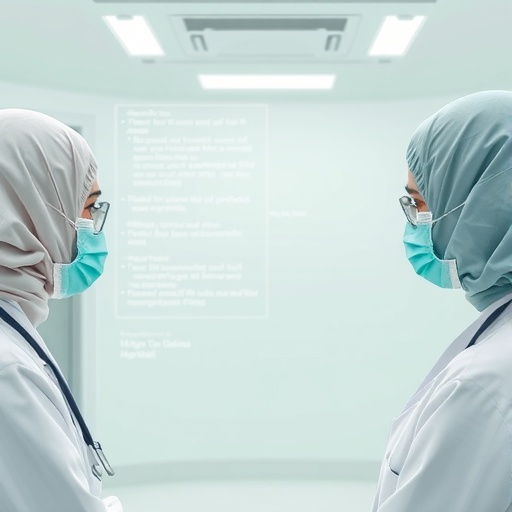PHILADELPHIA – A new discovery about how the immune system responds to common sinus infections and asthma could explain why patients develop these issues in the first place and ultimately may lead to improved targeted therapies. Researchers from the Perelman School of Medicine at the University of Pennsylvania have identified the source of the inflammatory cytokine Interleukin-25 (IL-25), an immune molecule that recruits a subset of inflammatory cells. Common respiratory disorders like chronic rhinosinusitis and asthma have recently been linked to elevated levels of IL-25, but the cellular source of it in the respiratory system was unknown until now. The Journal of Allergy and Clinical Immunology published the findings today.
The source of IL-25 is the solitary chemosensory cell (SCC), a highly-specialized type of cell similar to cells found in taste buds as well as cells in the gut. In non-inflamed tissue, SCCs make up about one percent of human cells lining the sinuses. However, when Penn researchers looked at human nasal polyps, the number of SCCs lining the polyp tissue was massively increased. Furthermore, treating these cells in a petri dish with the inflammatory molecule Interleukin-13 (IL-13), which has been implicated in driving nasal polyp formation and asthma, stimulated expansion of the SCCs and increased production of IL-25.
"The more of these cells are present, the more likely the body will mount an inappropriate, exaggerated immune response due to elevated levels of IL-25. The body ends up in a vicious cycle, and so it never goes back to its baseline," said the study's senior author Noam A. Cohen, MD, PhD, a professor of Otorhinolaryngology and director of Rhinology Research at Penn.
Surprisingly, the researchers also found that IL-25 is secreted into mucus, not tissue, meaning an extra step is apparently required before the cells can go to work. The IL-25 has to get from the mucus into the tissue to have its effect, otherwise the IL-25 is simply sneezed out or blown out in a tissue. However, if the linings of the sinuses have been breached by infection or irritants in the environment, then the IL-25 can access the underlying tissue, resulting in recruitment of additional immune cells and local inflammation.
"We can measure levels of IL-25 in the mucus, so it's possible this can be an indicator of who will develop conditions like polyps or asthma," said the study's lead author Michael Kohanski, MD, PhD, a Rhinology Fellow at Penn. "Also, if we can bind up IL-25 before it reaches the tissue, we may be able to prevent the inflammation altogether."
Cohen pointed out that the process of SCC's secreting IL-25 is normal, and thus is most likely not something that should be completely prevented.
"Rather, we want to control the excessive concentrations found in polyps in a targeted way, perhaps with a nasal spray," Cohen said. Cohen added that this approach may reduce clinical reliance on steroids. He and his team say they are planning further research to examine this approach.
###
This research was supported by grants from the National Institutes of Health (R01 AI095289, R01DC013588), a Burroughs Wellcome Fund Path Award (U01AI125940), and the R.L.G. Foundation, Inc.
Penn Medicine is one of the world's leading academic medical centers, dedicated to the related missions of medical education, biomedical research, and excellence in patient care. Penn Medicine consists of the Raymond and Ruth Perelman School of Medicine at the University of Pennsylvania (founded in 1765 as the nation's first medical school) and the University of Pennsylvania Health System, which together form a $7.8 billion enterprise.
The Perelman School of Medicine has been ranked among the top five medical schools in the United States for the past 20 years, according to U.S. News & World Report's survey of research-oriented medical schools. The School is consistently among the nation's top recipients of funding from the National Institutes of Health, with $405 million awarded in the 2017 fiscal year.
The University of Pennsylvania Health System's patient care facilities include: The Hospital of the University of Pennsylvania and Penn Presbyterian Medical Center — which are recognized as one of the nation's top "Honor Roll" hospitals by U.S. News & World Report — Chester County Hospital; Lancaster General Health; Penn Medicine Princeton Health; Penn Wissahickon Hospice; and Pennsylvania Hospital — the nation's first hospital, founded in 1751. Additional affiliated inpatient care facilities and services throughout the Philadelphia region include Good Shepherd Penn Partners, a partnership between Good Shepherd Rehabilitation Network and Penn Medicine, and Princeton House Behavioral Health, a leading provider of highly skilled and compassionate behavioral healthcare.
Penn Medicine is committed to improving lives and health through a variety of community-based programs and activities. In fiscal year 2017, Penn Medicine provided more than $500 million to benefit our community.
Media Contact
John Infanti
[email protected]
215-301-5221
@PennMedNews
http://www.uphs.upenn.edu/news/
http://dx.doi.org/10.1016/j.jaci.2018.03.019




